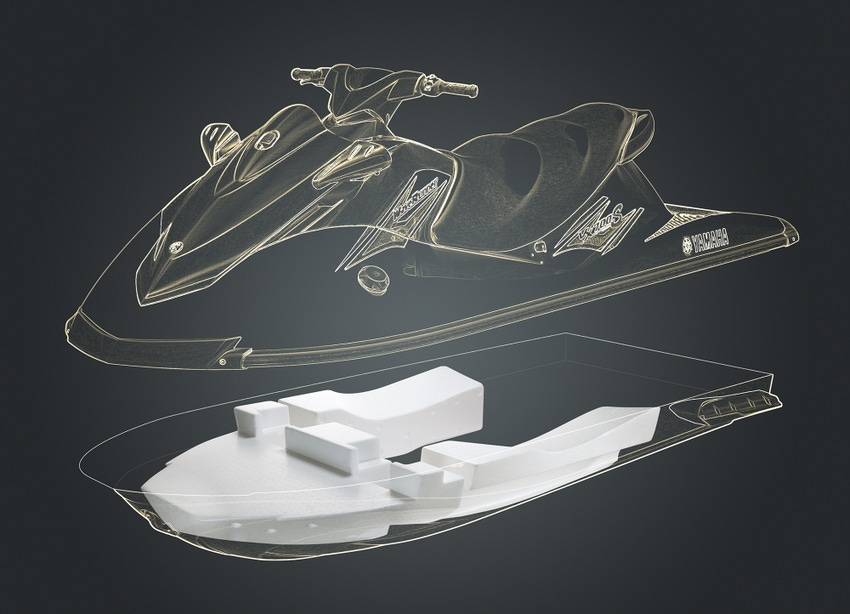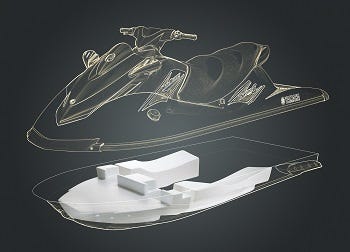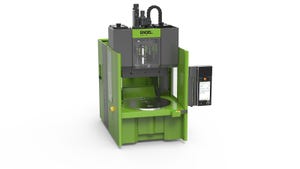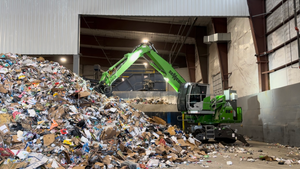Personal water craft gets buoyancy lift with expandable interpolymer
An expandable polystyrene/polyethylene (PS/PE) interpolymer from BASF (Ludwigshafen, Germany) has helped a personal water craft (PWC or jetski) manufactured by Yamaha Motor fulfill the requirements on light weight and buoyancy according to ISO 13590.The E-por particle foam from BASF is installed in the front and side spaces of the body of the WaveRunner VX700S model by the Japanese manufacturer where it ensures the buoyancy of the PWC due to its low density.
August 8, 2013

An expandable polystyrene/polyethylene (PS/PE) interpolymer from BASF (Ludwigshafen, Germany) has helped a personal water craft (PWC or jetski) manufactured by Yamaha Motor fulfill the requirements on light weight and buoyancy according to ISO 13590.
The E-por particle foam from BASF is installed in the front and side spaces of the body of the WaveRunner VX700S model by the Japanese manufacturer where it ensures the buoyancy of the PWC due to its low density.
|
Jet ski gets flotage boost via foamed interpolymer. |
The mass of the VX700S consists mainly of the engine, jet, tank and hull and it offers a boarding capacity for up to three passengers. To achieve the necessary flotage, the water craft requires a stable structure which provides the buoyant force. E-por is reportedly extremely well suited as a flotage structure due to its low density and property profile. The VX700S at a vessel's body weight of 240 kilograms is the lightest three-seater PWC model ever built. Despite making up a large proportion of the total volume, the E-por parts account for only 3.3 kilograms of the total weight. Furthermore, E-por can be easily processed, like EPS (expanded polystyrene), into the desired density and shape, so that the molded parts can be inserted optimally into the casing.
Hiromi Ishizaka, account manager at Japanese processor Astec Corporation (Nagoya, Japan), together with their business partner Sano Enterprises, advised Yamaha Motor during the material selection: "The BASF interpolymer offers us and our customers an interesting alternative to other foams , and E-por impresses because of its good property profile." In particular, the minimal water absorption, its crack-resistance and also the good chemical resistance of the BASF particle foam played a crucial role in the selection process. With these characteristics, E-por also assists in improving the rigidity of the vessel's hull. Keijiro Ikeda , Manager at Yamaha Motors' Water Vehicle Business Unit , explains: "The foam is suitable for use in the WaveRunner as it meets all our technical requirements."
PWCs consist of a hull made of glass-fiber-reinforced plastic and are supplied in various designs - from the stand-up versions suitable for one person to sit down models for up to four people. Outside of the leisure field, they also used as fast and flexible emergency and patrol vehicles for water-borne police, fire and rescue services. The most popular market for PWCs is the US where at present approximately 1.2 million vehicles are registered.
E-por is an expandable interpolymer, based on a complex formulation of different PE and PS polymers which interact with each other as well as with the blowing agent. It is a crack-resistant particle foam that is also very resistant to solvents. This tough-elastic foam can also be stored, processed, and recycled like EPS. E-por can be processed on standard EPS foam equipment for which steam pressures of up to just 1.2 bar are required.
About the Author(s)
You May Also Like



